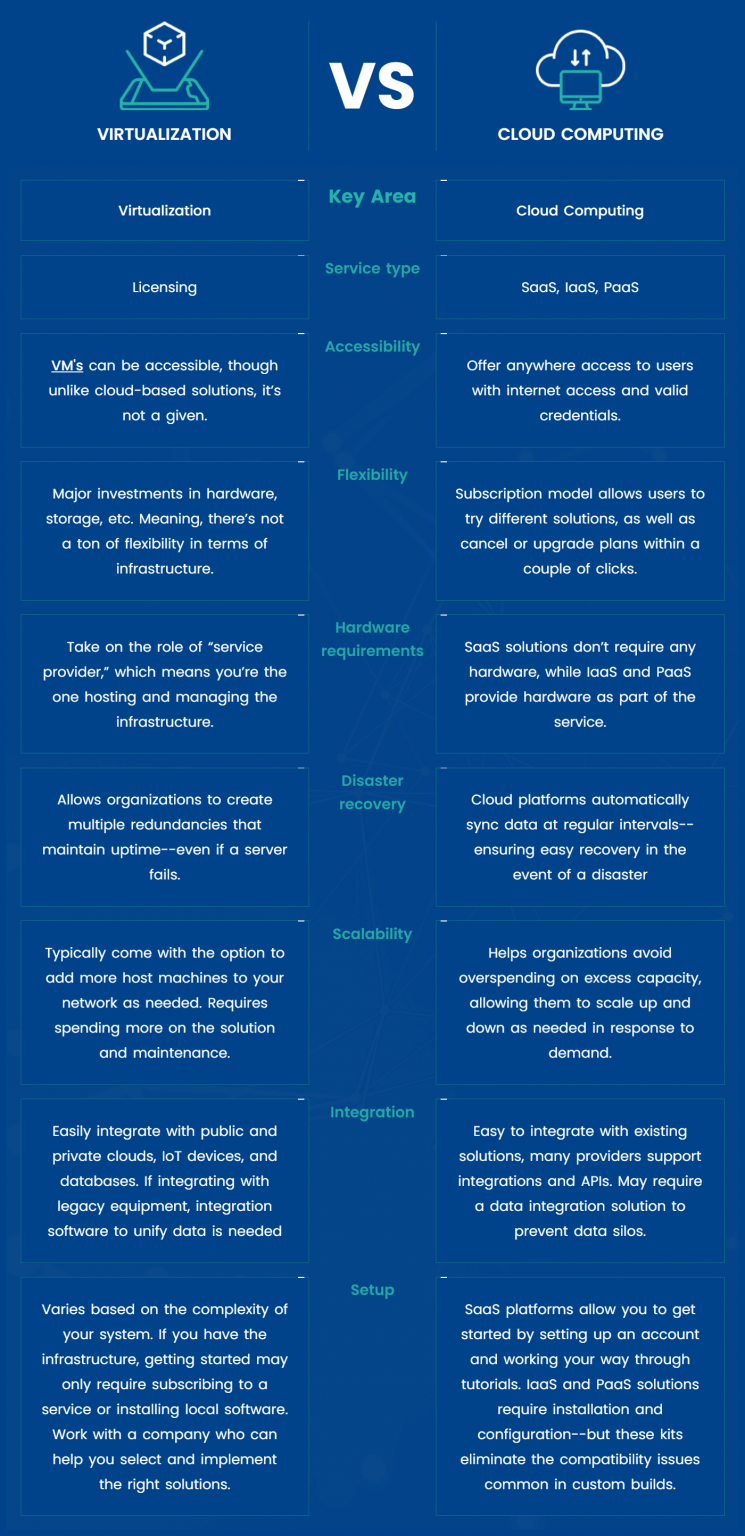
Navigating Cloud Migration: Overcoming Challenges and Maximizing Benefits
Exploring some of the key considerations and challenges in migrating legacy applications to the cloud and sharing practical strategies for a successful transition.
Cloud computing brings hardware, software, and high-level network resources together to support the needs of both companies and individuals. In this scenario, a cloud services provider makes several different types of services available for businesses to access via the internet.
According to the National Institute of Standards and Technology’s (NIST) guidelines, we can define cloud computing by the following characteristics:
In this scenario, cloud customers using the platform should be able to perform activities like sending emails, creating reports, and collaborating without any help from the IT department.
The cloud vendors offer three cloud services models:
Infrastructure-as-a-Service or IaaS allows businesses to use cloud services like data storage and virtual servers without ever owning, managing, or maintaining the physical infrastructure.
You don’t need a physical data center with servers to get the job done. You just have to access cloud services through an Application Programming Interface (API) or a control panel.
PaaS or Platform-as-a-Service provides developers with the platforms and tools they need to build and deploy applications. For example, software developers can build either simple mobile apps or top-notch software entirely on a cloud platform.
As the cloud services provider manages all updates and hardware maintenance, you only have to manage your application.
Software-as-a-Service or SaaS is probably the most common cloud computing model that allows customers to use software installed on a remote server. As the software can only be accessed through the internet, you don’t need any additional components to use SaaS applications.
Virtualization is a type of software that separates different computing environments from physical infrastructures to run multiple operating systems and applications concurrently on the same computer.
For example, suppose you’re working in a virtualized workspace. In that case, you can use both Mac and PC applications by running Windows on a virtual machine to access those applications on a Mac without switching computers.
Virtualization, like cloud computing, helps businesses cut costs while improving the efficiency, flexibility, and utilization of existing enterprise hardware.
Key characteristics of virtualization include:
There are many use cases for virtualization. The most popular virtualization models are as follows:
Virtualization makes it much easier for software engineers to test their applications across different environments without setting up and running them on multiple computers.
Whenever an application crashes a virtual machine, you can simply close and restart the virtual machine back to its previous state.
Data virtualization makes life easier for data users. This approach helps users quickly manipulate data using an abstraction that exists independent of existing database systems and data structures.
In this case, data abstraction is like a test where users can check and fix potential errors before saving them.
Desktop virtualization enables users to run several operating systems on one computer. This approach is quite common in corporate environments.
There are two main categories of desktop virtualization:
VDIs also enable organizations to offer services like cloud-based applications to end-users, remote security monitoring, and support distributed teams across multiple locations (even across the planet).
Server consolidation is a critical benefit of virtualization because it helps split a server’s resources for multiple purposes. So, you don’t have to maintain several different servers with unique functions.
Server consolidation helps businesses, and especially cloud services providers, make the most of underutilized server resources. This approach helps save money and space within a data center.
Software virtualization helps separate applications from the host machine’s underlying operating system and hardware. This approach is often used to see how a new application will interact with your existing stack.
By creating a copy of your current configuration and data, you can test new applications, software updates, patches, and any installation scenario that can potentially put your data at risk.
Storage virtualization brings together multiple network storage resources into a single storage location. This approach helps users access the data they need to get the job done from anywhere in the world.
Software virtualization also allows connected servers, applications, and devices to access data from a centralized dashboard without knowing exactly where the information is stored. This approach also makes system backups and data transfers more straightforward.

Cloud computing offers an integrated environment of automated and pooled resources and services that are available on demand. Virtualization, on the other hand, is software used to create several simulated environments on a single piece of physical hardware.
In that sense, virtualization seems more challenging. But creating a cloud is far from straightforward. It’s expensive, time-intensive, and often a tedious experience.
In contrast, virtualization demands far less effort and is much cheaper than setting up a cloud. However, partnering with a cloud services provider is cost-effective and far more straightforward than creating your own cloud from scratch.
The cloud is automatically scalable, while the same is challenging in a virtual environment. Cloud computing leverages various dedicated hardware devices, while virtualization often uses a single hardware device.
As such, unlike virtualization, cloud computing uses multiple peripherals for disaster recovery. The cloud is more flexible and cost-effective in the long term than virtualization.
As you can see, cloud computing and virtualization aren’t the same things. They are also not competing solutions. In a way, cloud computing itself is the evolution of virtualization.
IT and software development teams that have seen the benefits of virtualization often champion a move to the cloud. In the future, businesses will probably make the best of both approaches as these technologies evolve and scale.

Exploring some of the key considerations and challenges in migrating legacy applications to the cloud and sharing practical strategies for a successful transition.

This article offers organizations a comprehensive guide to navigating the complexities of transitioning legacy applications to cloud infrastructure.

Delving into the essence of successfully implementing ML projects, exploring strategic approaches, the comprehensive life cycle from conception to deployment, and real-world industry applications.
Copyright © 2023 rinf.tech. All Rights Reserved.
Terms & Conditions. Cookie Policy. Privacy Policy.
Politica Avertizari de Integritate (RO)